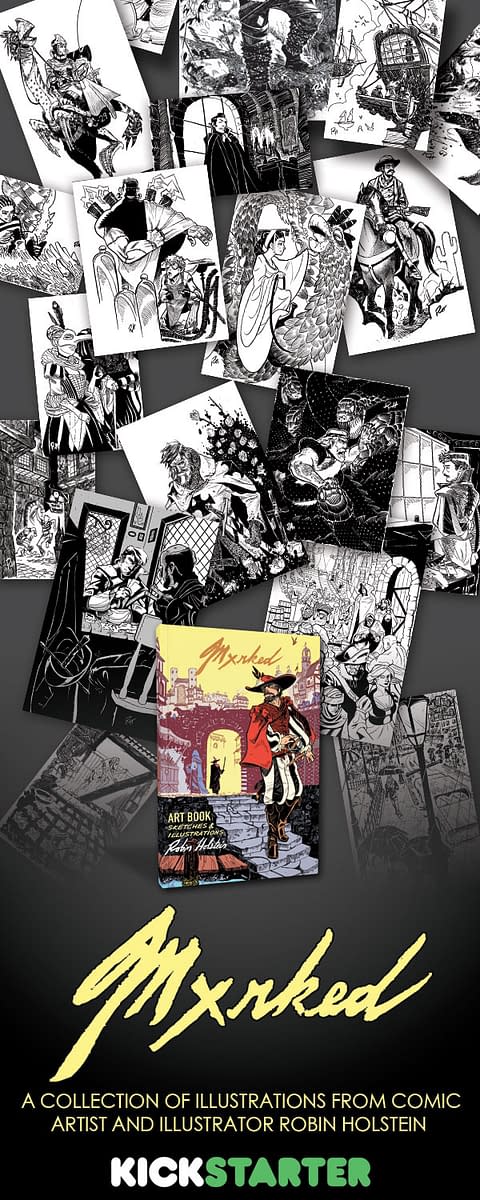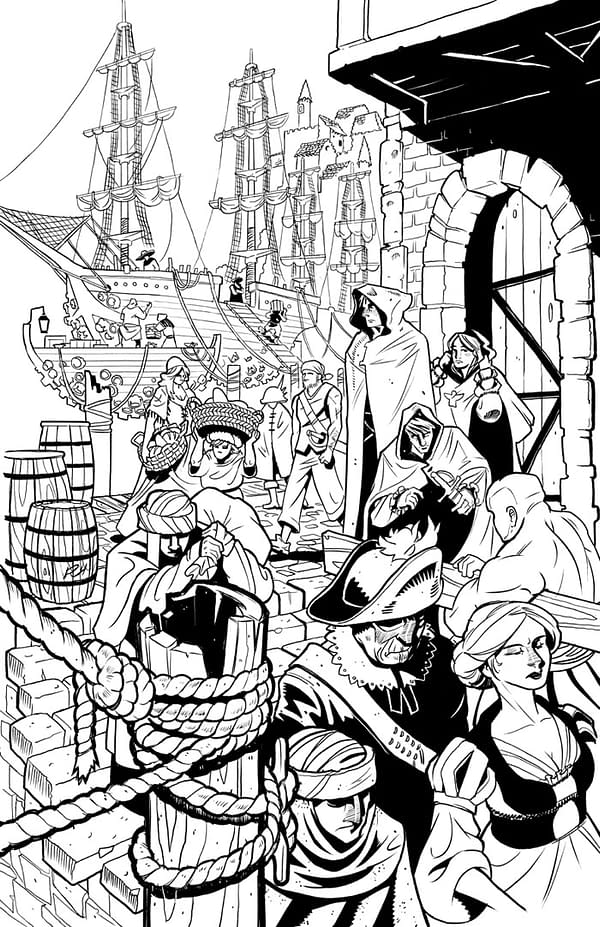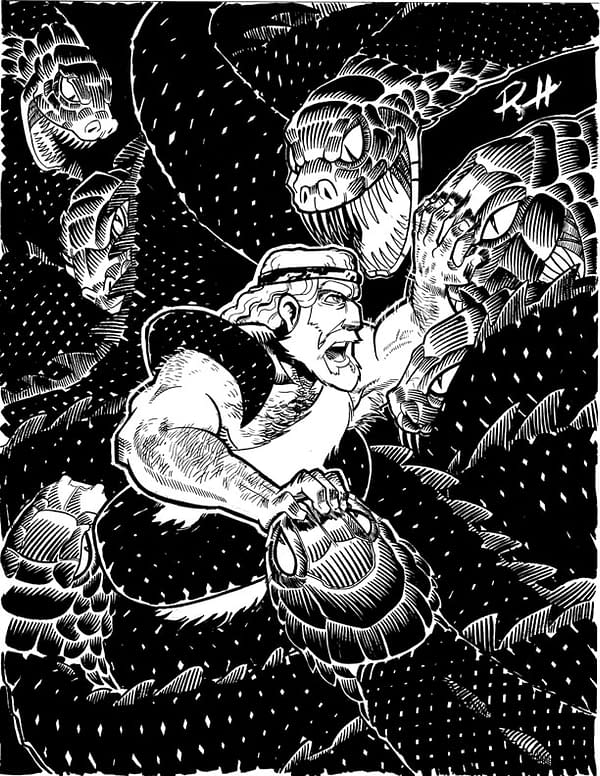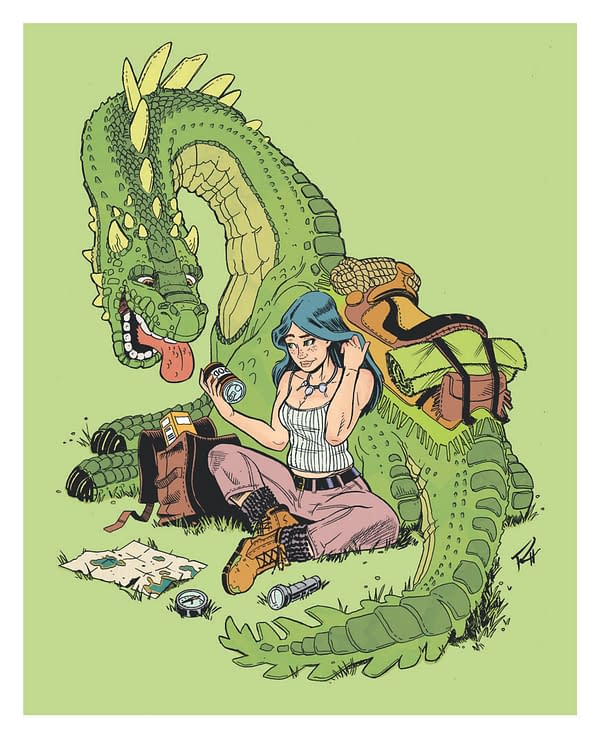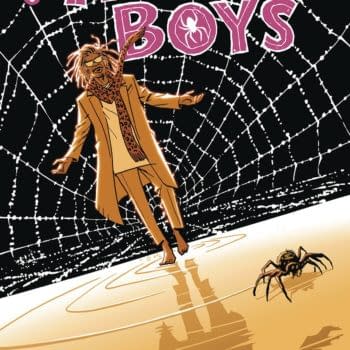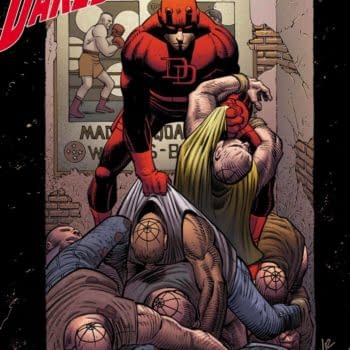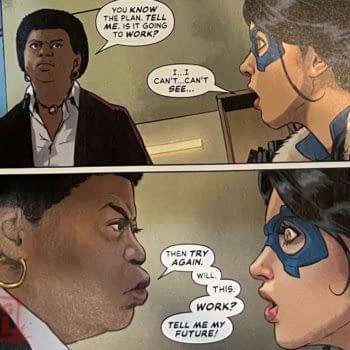Posted in: Comics | Tagged:
What Someone Working On Marvel Avengers Academy Learned From Their First Kickstarter
Robin Holstein writes,
Hi everyone! My name is Robin Holstein. I'm an animator at TinyCo and currently working on Marvel Avengers Academy for mobile devices. When not at work I'm working on art and comics. I'm running a Kickstarter right now for my art book MXRKED.
A year ago I asked myself "What does it truly take for someone to support themselves comfortably with their own comics and art?"
Thankfully I came across a few helpful people who've made it to the other side. Comic creators and artists, Jason Brubaker and Jake Parker, have been the most helpful and eye opening. They are very open about their income structure so others can learn from them. Their success on Kickstarter shows that becoming independent is possible.
I currently have enough art to collect into an art book. I was going to print it on my own, but saw an opportunity to make a mini-event out of it and learn how to run a Kickstarter campaign in preparation for my comic. I'm so happy I did because there is a lot to learn and now I have several ideas that I want to try for my next Kickstarter. Creating an art book also forced me to go through the life cycle of a product from concept to marketing and distribution. Here a few things that I've learned up to this point of running my first Kickstarter for my art book MXRKED.
Creating The Work
This is the more natural part of the process for artists and writers. This is pretty self explanatory. Go make stuff.
Sharing The Work
This will build your fan base who will support you when you have a product that you are promoting.
Not all social media sites are created equal. Forty percent of my backers have come from Facebook. This is surprising and not surprising the more I look into it. My friends on Facebook are people I'm most intimate with compared to other social sites.
Along with posting on your favorite social media sites consider having an official website with a blog and store natively built in. It's good for exposure and allows fans to follow up to see what work you've created and things they may be interested in buying.
Being Consistent
Consistency keeps fans interested and exposes them to upcoming products. Continuous exposure will help generate excitement about new products. Some fans are your "Day 1" backers while others will need an ongoing reminder during the campaign and will eventually remember to back the book.
Launching the Product
When I decided to go through Kickstarter for my project I took a couple of months to research and put together my page. It was time well spent because while looking into literature about Kickstarter I found communities and blog posts that answered questions I had about offset printing, merchandising, marketing and distribution.
Marketing
This was my weakest area before running a Kickstarter campaign. Coming up with a strategy to share the Kickstarter with my fans throughout the campaign and go outside of my sphere of influence was a challenge. I started with my social circle, expanded to my physical local area, and then to news and blogs.
To tap into my social circle I used social media, my website, and email mailing list. I thought mailing lists were antiquated until I had a product that I needed to market. Now I know mailing lists are a direct line of marketing. If you don't have one be sure to start one.
For local reach I put up flyers in store windows and community corkboards in coffee shops, talked to my local comic shops, and contacted local news sites and papers.
Online news sites and blogs (like Bleeding Cool) are amazing for bringing people's attention to Kickstarter projects. Making contact and building a relationship with them is worthwhile.
With marketing I thought I was overdoing it and was concerned I was spamming by posting across all my social media sites. I realize now it's par for the course and no matter how much I shout about my project it may be the bare minimum and I could be doing more.
Distribution
Making sure you get your products to your fans and backers in a timely manner is how you build trust. If you continue building that trust you will gain a positive reputation and next time you release a product you will have return customers.
After the Kickstarter ends you start the cycle all over again. I know this is a simplified view of the process. There are a lot of little steps that I had to learn along the way and still have more to learn.
Currently the main funding goal has been met and now stretch goals are being unlocked. This makes me happy because I want my backers to get more rewards with their pledges for coming out and showing their support for my book.
There are still early bird specials available! If they are all gone by the end of the weekend I'll add more to give Bleeding Cool readers the opportunity to take advantage of the deal.
Some of you may be trying to support yourselves with your own creator owned comic, and some of you already do. If you have any comments, ideas or tips to share I want to hear from you in the comments below!


